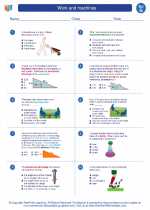Cloudy
Cloudy weather refers to a condition where the sky is covered with clouds, obstructing the direct view of the sun or moon. Clouds are formed when warm, moist air rises and cools, causing the water vapor in the air to condense into tiny droplets or ice crystals. There are different types of clouds, each with its own unique characteristics and formation processes.
Types of Clouds
- Cirrus Clouds: Thin, wispy clouds found at high altitudes. They are composed of ice crystals and often indicate fair weather.
- Cumulus Clouds: Fluffy, white clouds with flat bases, often resembling cotton balls. They are associated with fair weather but can develop into cumulonimbus clouds, leading to thunderstorms.
- Stratus Clouds: Low-lying, layered clouds that cover the sky like a blanket. They often bring overcast or drizzly conditions.
- Cumulonimbus Clouds: Towering clouds that can extend vertically through the troposphere. They are associated with thunderstorms, heavy rain, and sometimes hail or tornadoes.
Factors Affecting Cloud Formation
Several factors contribute to the formation and characteristics of clouds, including:
- Humidity: The amount of water vapor in the air affects the formation and type of clouds that develop.
- Temperature: Cooler temperatures promote the condensation of water vapor into clouds.
- Atmospheric Stability: The presence of stable or unstable air masses can influence the vertical development of clouds.
- Wind Patterns: The movement of air can affect the shape and distribution of clouds in the sky.
Effects of Cloudy Weather
Cloudy weather can have various impacts on the environment and human activities, including:
- Temperature Regulation: Cloud cover can moderate temperatures by blocking the sun's rays during the day and trapping heat at night.
- Precipitation: Clouds are associated with the formation of rain, snow, and other forms of precipitation, essential for sustaining ecosystems and human needs.
- Aesthetics and Mood: Cloudy skies can create dramatic and beautiful scenery, influencing human emotions and artistic inspiration.
- Agricultural Impact: Cloud cover affects plant growth, water availability, and overall agricultural productivity.
Study Guide
To understand the concept of "cloudy" in depth, consider the following study guide:
- Define the term "cloud" and explain the process of cloud formation.
- Identify and describe the characteristics of different types of clouds.
- Examine the factors that influence cloud formation and distribution in the atmosphere.
- Analyze the effects of cloudy weather on the environment, climate, and human activities.
- Discuss the significance of clouds in meteorology, agriculture, and visual arts.
By exploring these aspects, you can gain a comprehensive understanding of the phenomenon of cloudy weather and its multifaceted impacts.
.





